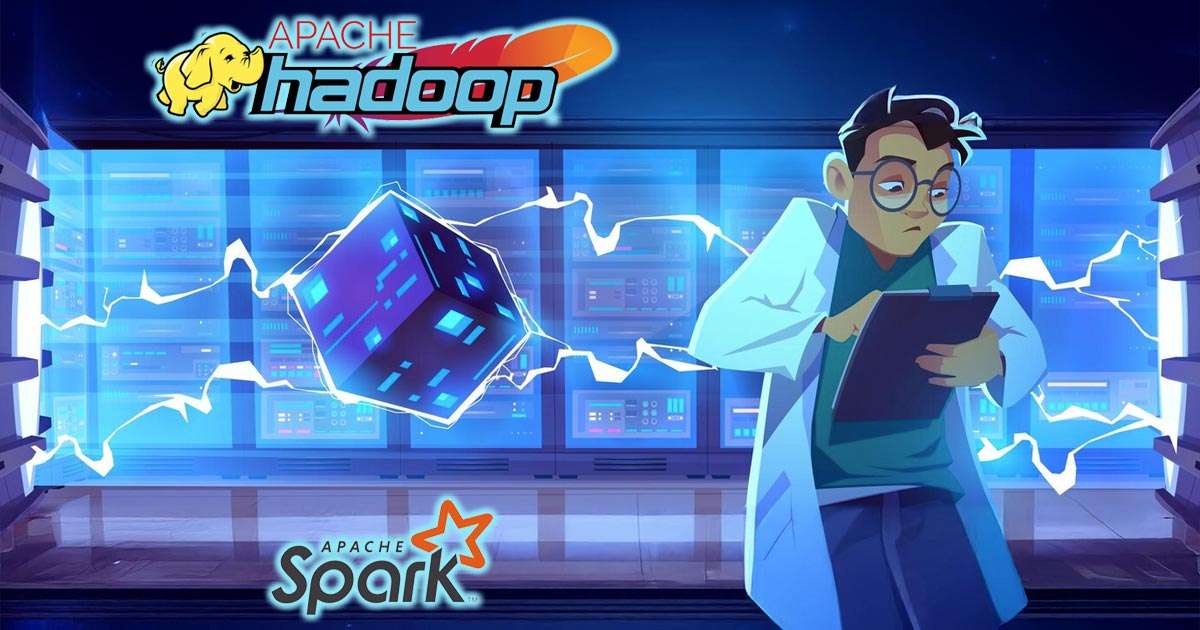Hadoop vs. Spark: A Head-to-Head Comparison

Organizations are generating and processing massive amounts of data. Hadoop and Spark are two of the most well-known systems for effectively leveraging data. Both of these technologies play crucial roles in big data processing, but they serve different purposes and have unique features.
Understanding Hadoop and Spark
Apache Hadoop is a free framework for storing and processing massive volumes of data across multiple machines. It uses easy programming models, making it flexible for different tasks. Hadoop can grow from just one server to thousands of machines, each providing its own storage and computing power. The main parts of Hadoop include:
- Hadoop Distributed File System (HDFS) is a mechanism for distributing data across multiple machines.
- MapReduce is a method used to process large data sets by breaking them into smaller tasks that can run at the same time.
- YARN (Yet Another Resource Negotiator) is a tool that manages resources and organizes jobs across the entire cluster.
Apache Spark, on the other hand, is an analytics engine built specifically for big data processing. It comes with built-in tools for streaming data, running SQL queries, machine learning, and working with graphs. Unlike Hadoop, which often uses disk storage to process data, Spark uses in-memory computing. This means it can access data much faster, leading to better performance.
Hadoop vs Spark: Key Differences
While both Hadoop and Spark are used for big data processing, there are several key differences that set them apart. Understanding these differences can assist you in determining which technology is most appropriate for your needs.
1. Processing Model
Hadoop uses a batch processing model, meaning it processes data in large blocks and executes tasks sequentially. This strategy can result in lengthier processing times, particularly for iterative algorithms seen in machine learning.
Spark, on the other hand, employs an in-memory processing approach, allowing it to store intermediate data in memory rather than on disk. This results in significantly faster processing times, making Spark ideal for real-time analytics and iterative machine-learning tasks.
2. Speed
One of the biggest advantages of Apache Spark compared to Hadoop is its speed. Spark processes data in memory instead of saving temporary results to disk like Hadoop, which speeds up data access and reduces delays. It uses a Directed Acyclic Graph (DAG) engine to optimize execution by minimizing disk use. Additionally, Spark has lazy evaluation, meaning it only calculates results when needed, which further boosts performance.
3. Ease of Use
Programming in Hadoop can be complex, especially for those unfamiliar with Java or MapReduce programming. While there are higher-level tools like Pig and Hive that simplify the process, they still require a certain level of expertise.
Spark provides a more user-friendly API and supports a variety of programming languages, including Java, Scala, Python, and R. This flexibility enables developers and data scientists to work in the languages they desire, making Spark more accessible.
4. Data Processing Capabilities
Hadoop is primarily intended for the batch processing of huge datasets. It excels in scenarios where data does not require real-time analysis.
Spark can handle both batch processing and real-time stream processing. Its capabilities allow it to handle both historical data and live data streams, providing a more comprehensive solution for varied data workloads.
5. Fault Tolerance
Both Hadoop and Spark offer fault tolerance, but they implement it differently.
HDFS automatically duplicates data across several nodes. If one node fails, data can be recovered from another node. This protects the data’s integrity and availability.
Spark achieves fault tolerance through a feature called Resilient Distributed Datasets (RDDs). RDDs are immutable and can be rebuilt from the original data if a failure occurs, allowing Spark to recover lost data quickly.
6. Ecosystem and Integration
Hadoop’s ecosystem is mature, with a variety of tools and components that work together effortlessly. Tools like Hive, Pig, HBase, and ZooKeeper enhance Hadoop’s capabilities.
Spark can integrate with the Hadoop ecosystem and utilize HDFS for storage. However, it also has its own set of tools, such as Spark SQL and MLlib, which may appeal to users looking for a more cohesive solution.
7. Cost of Ownership
Both frameworks are open-source, but the total cost of ownership can vary based on the infrastructure and resources required.
Because Hadoop processes data on disk, organizations might incur higher costs for storage and longer processing times, which could impact operational costs.
The faster processing capabilities of Spark can lead to lower overall costs for computation. However, Spark’s in-memory processing may require more RAM, potentially increasing hardware costs.
Use Cases for Hadoop and Spark
Both Hadoop and Spark have special strengths that make them suitable for different tasks:
Use Cases for Hadoop
- It is a budget-friendly option for organizations to store large amounts of past data.
- It effectively collects logs from various sources before they are analyzed.
- It is excellent for archiving large datasets because it can grow easily and is cost-efficient.
Use Cases for Spark
- Financial institutions can use Spark to spot fraudulent activities as they happen.
- Companies can analyze live social media feeds to understand public sentiment or trending topics.
- Data scientists can quickly build and deploy machine learning models using Spark’s built-in libraries.
Integration of Hadoop and Spark
Although Hadoop and Spark have different purposes, they can work together effectively. Many organizations use both in a hybrid approach, where:
- Hadoop manages storage (HDFS) and batch-processing jobs with MapReduce.
- Spark does real-time analytics and processes data stored in HDFS more efficiently.
- This combination allows businesses to make the most of both frameworks.
Deciding Between Hadoop and Spark for Your Data Needs
Both Apache Hadoop and Apache Spark are important in the big data world. Knowing their differences helps organizations choose what they need.
As businesses deal with big data challenges, using both frameworks together can be the best way to manage and analyze data effectively.
By understanding the differences between Hadoop and Spark, organizations can gain valuable insights from their data while improving performance and reducing costs.

